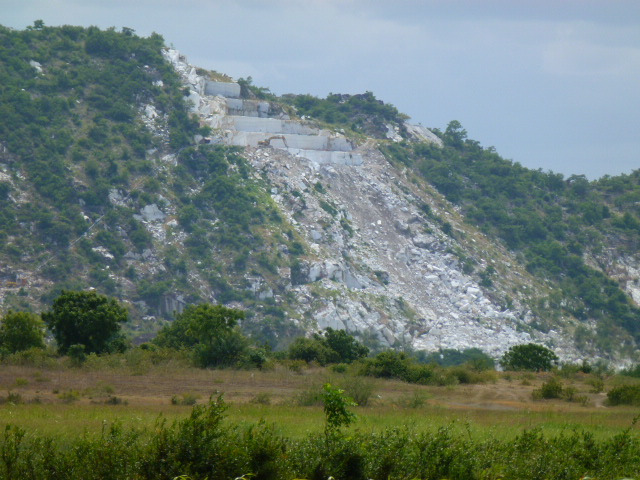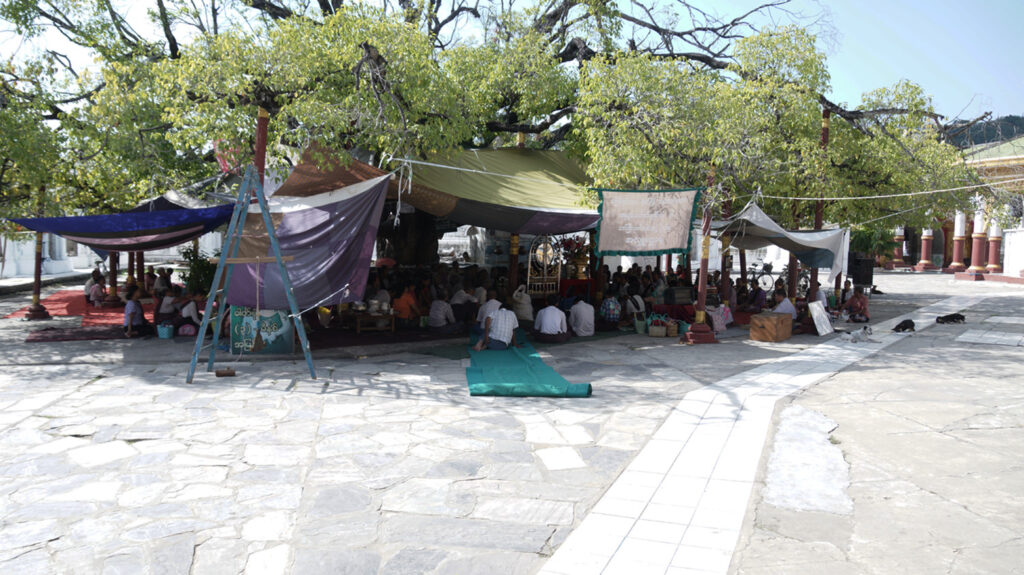Kuthodaw Pagoda
Materiality of the Kuthodaw Pagoda site


The grey-white streaked marble used for the stelae was sourced from Sagyin Mountain, located over 30 kilometres north of the Kuthodaw Pagoda. Once the marble had been extracted from the quarry, it was reportedly transported to Mandalay via boats travelling down the Irrawaddy River. Sagyin Mountain may be visited today and is still an active marble quarry with artisan workshops producing religious statues. Each marble stela has been set within a mini-pagoda with metal-barred window openings on three sides and a metal-grille door on the fourth. Since bodily relics are traditionally interred in pagodas, the placement of the stelae within mini-pagodas highlights the sacred status of the inscribed text, while also providing some protection from the elements. The 729 marble stelae have been arranged in seven concentric squares grouped into three sections, representing the three piṭakas, or ‘baskets’, of the Pali canon. Each stela is numbered and if one were to visit each sequentially, s/he would walk in a clockwise direction around the central pagoda, which is the traditional way to circumambulate a pagoda.

Use of the Kuthodaw Pagoda site
While the Kuthodaw Pagoda is of great historical importance, it is also a sacred space that is still used as a place of devotion for Myanmar’s Buddhist majority. Buddhists come to the site for merit making, meditation, listening to the sermons of monks, etc. It is also one of the larger areas in Mandalay open to the general public and during public holidays the site is filled with families having picnics.


